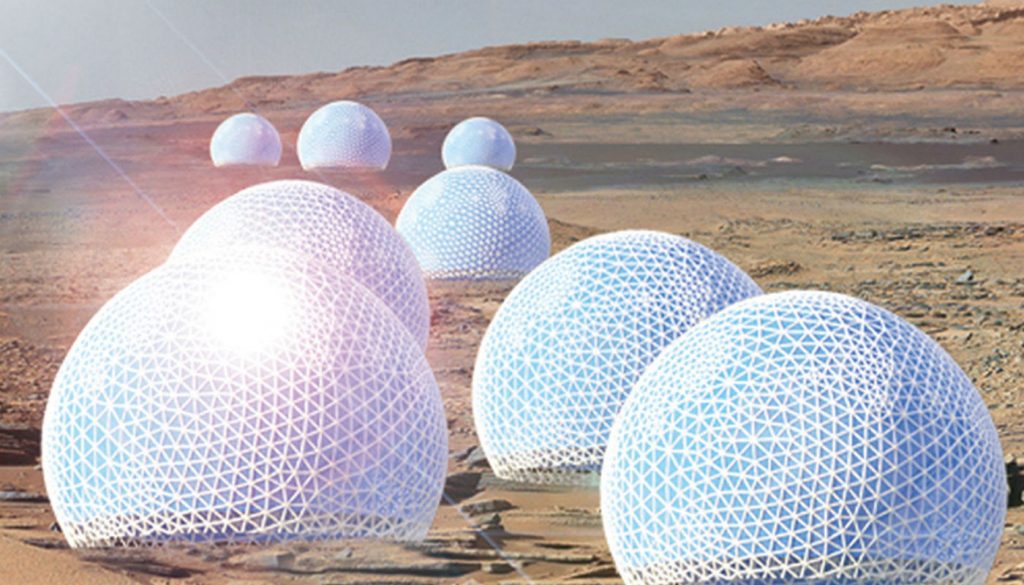When it comes to humans colonising Mars, it’s looking like a ‘not if but when’ situation, which means it’s time to get serious about what life on the red planet might look like.
A team of designers from the Massachusetts Institute of Technology (MIT) have rocketed to first place in the 2017 Mars City Design contest with their innovative tree top-style domes.
The innovative arboreal design, which can accommodate up to 50 people per dwelling, also incorporated features that could solve problems with earth-based living, such as multi-level underground networks to ease traffic congestion and hydroponic gardening beneath cities to lower food transportation costs. It could also be used as housing for areas that are currently uninhabitable such as mountaintops, deserts and even the bottom of the sea.
Team leader and MIT postdoctoral researcher Valentina Sumini said that their Martian city design, Redwood Forest, will physically and functionally mimic a forest and use local resources such as ice, water, soil and sun to support life.
“Designing a forest also symbolises the potential for outward growth as nature spreads across the Martian landscape. Each tree habitat incorporates a branching structural system and an inflated membrane enclosure, anchored by tunneling roots,” Sumini said.
“The design of a habitat can be generated using a computational form-finding and structural optimisation workflow developed by the team. The design workflow is parametric, which means that each habitat is unique and contributes to a diverse forest of urban spaces.”
The team aimed to build an environment that is both comfortable and sustainable, and the system architecture uses solar energy to process and transport Martian water through the city’s trees.
“Water fills the soft cells inside the dome to provide protection from radiation, help manage heat loads, and supply hydroponic farms for growing fish and greens. Solar panels produce energy to split the stored water for the production of rocket fuel, oxygen and for charging hydrogen fuel cells, which are necessary to power long-range vehicles as well as provide backup energy storage in case of dust storms,” said team member George Lordos.
From left: George Lordos, Alpha Arsano, Caitlin Mueller and Valentina Sumini. (Photo: Valentina Sumini)The Mars City Design contest was started by Vera Mulyani in 2016 to create a blueprint for sustainable cities on Mars. It asks entrants to imagine it’s the year 2043 and they are responsible for creating human habitats on the red planet by 2100. What would they look like?
Entrants had to work within the confines of life on Mars and take into account materials, supporting and incremental infrastructure, and location, among other factors.
“It is essential that we call on a new generation of thinkers and innovators to make this a reality,” Mulyani explained.
“If the human destiny is to become a multi-planetary species, and the technology is making it possible, it becomes urgent to responsibly design the destinations that are out of this world, sustainable and contributive to the present Earth.”
Submissions are now open for next year’s competition. Head to the Mars City Design website to learn more.
